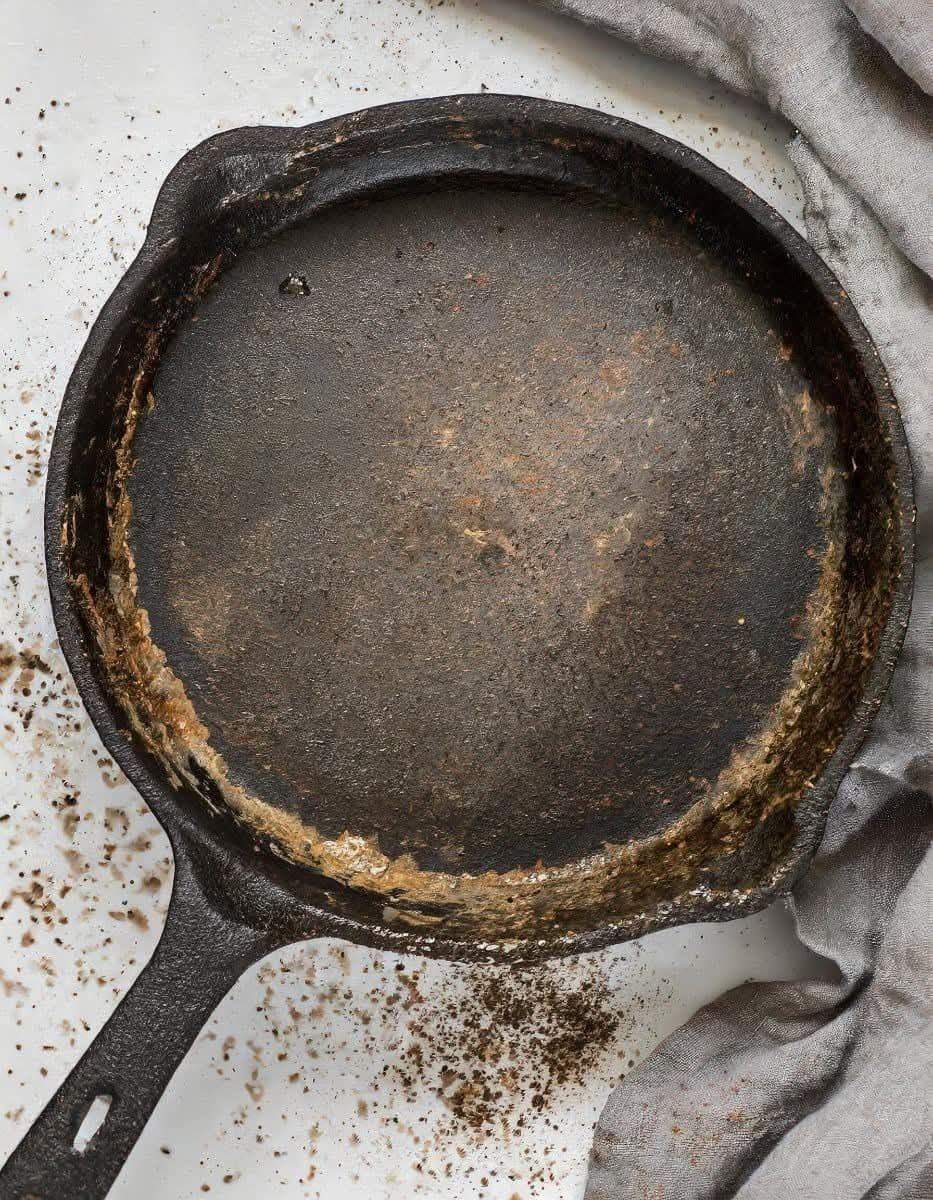ADVERTISEMENT
The Right Method to Clean Cast Iron Pans: Stop Scrubbing with Soap!
Cast iron pans are beloved for their unbeatable durability, even heat distribution, and natural non-stick surface when properly seasoned. They’re a kitchen staple that can last for generations if taken care of properly. However, when it comes to cleaning cast iron, many folks unknowingly make a big mistake—scrubbing their beloved pan with soap. This common misconception can strip away the seasoning, which is the key to your pan’s non-stick properties and flavor enhancement. But don’t worry! Cleaning cast iron isn’t as tricky as it may seem once you know the right method. Let’s walk you through the best way to clean, maintain, and season your cast iron pan to keep it in top condition.
Why Soap Is the Enemy of Your Cast Iron Pan
One of the most frequently asked questions about cast iron pans is whether or not soap is safe to use. The short answer is: No, soap should be avoided.
The seasoning on a cast iron pan is made up of layers of oil that have been heated and polymerized to create a non-stick coating. Soap, especially harsh dish detergents, can break down this seasoning and strip away those valuable layers. This leaves your pan more prone to rusting and can cause food to stick, making cooking and cleaning a hassle.
Don’t worry, though—this doesn’t mean you have to be afraid of cleaning your cast iron! It just means you need to use a bit of technique.
The Right Method to Clean Cast Iron Pans
Here’s a simple, effective guide on how to clean your cast iron pan without ruining the seasoning. Let’s dive in!
1. Let the Pan Cool (But Not Completely)
After cooking, allow your cast iron pan to cool slightly, but don’t let it cool all the way down to room temperature. Cleaning your pan when it’s still warm makes it easier to remove food particles and oil without damaging the seasoning.
Tip: If you’re in a hurry, you can run warm water over the pan as long as it’s not completely hot—this prevents the sudden temperature change that can cause the cast iron to crack.
2. Use Hot Water and a Brush or Scraper
Once the pan has cooled slightly, it’s time to clean it. Avoid using soap! Instead, simply rinse the pan under hot water. Use a non-abrasive brush or a scraper to remove food particles. A brush with stiff bristles works best, but you can also use a wooden or silicone scraper to gently scrape off stuck-on food.
Tip: If there are stubborn food bits stuck to the pan, fill the pan with water and bring it to a boil for a few minutes. This will help loosen any stuck food. Once it cools down, you can scrape it off more easily.
3. Avoid Soaking Your Pan
Never soak a cast iron pan in water for long periods, as this can cause rust to develop. While it may seem tempting to let it sit to loosen grime, prolonged exposure to moisture can be damaging to the cast iron.
Tip: If you have tough, stuck-on food that won’t come off with water, sprinkle some kosher salt into the pan while it’s still warm, then use a brush or paper towel to scrub it off. The coarseness of the salt acts as a natural abrasive without damaging the seasoning.
4. Dry Immediately
After cleaning your pan, make sure to dry it thoroughly. Cast iron is highly susceptible to rust, and even small amounts of moisture left on the surface can cause it to oxidize. You can use a towel to dry it, or heat the pan over low heat on the stovetop for a few minutes to ensure it’s completely dry.
5. Re-oil Your Cast Iron Pan
After the pan is clean and dry, it’s time to re-season it. This step is crucial to maintain your cast iron pan’s non-stick properties and prevent rust. Simply apply a thin layer of vegetable oil, canola oil, or flaxseed oil to the entire surface of the pan, including the handle. Make sure to wipe off any excess oil so the pan doesn’t feel greasy.
Once oiled, heat your cast iron pan on the stovetop or in the oven at a low temperature (around 350°F or 175°C) for about an hour. This allows the oil to bond to the cast iron and form a protective layer of seasoning.
Tip: Regularly re-season your cast iron after each cleaning to
